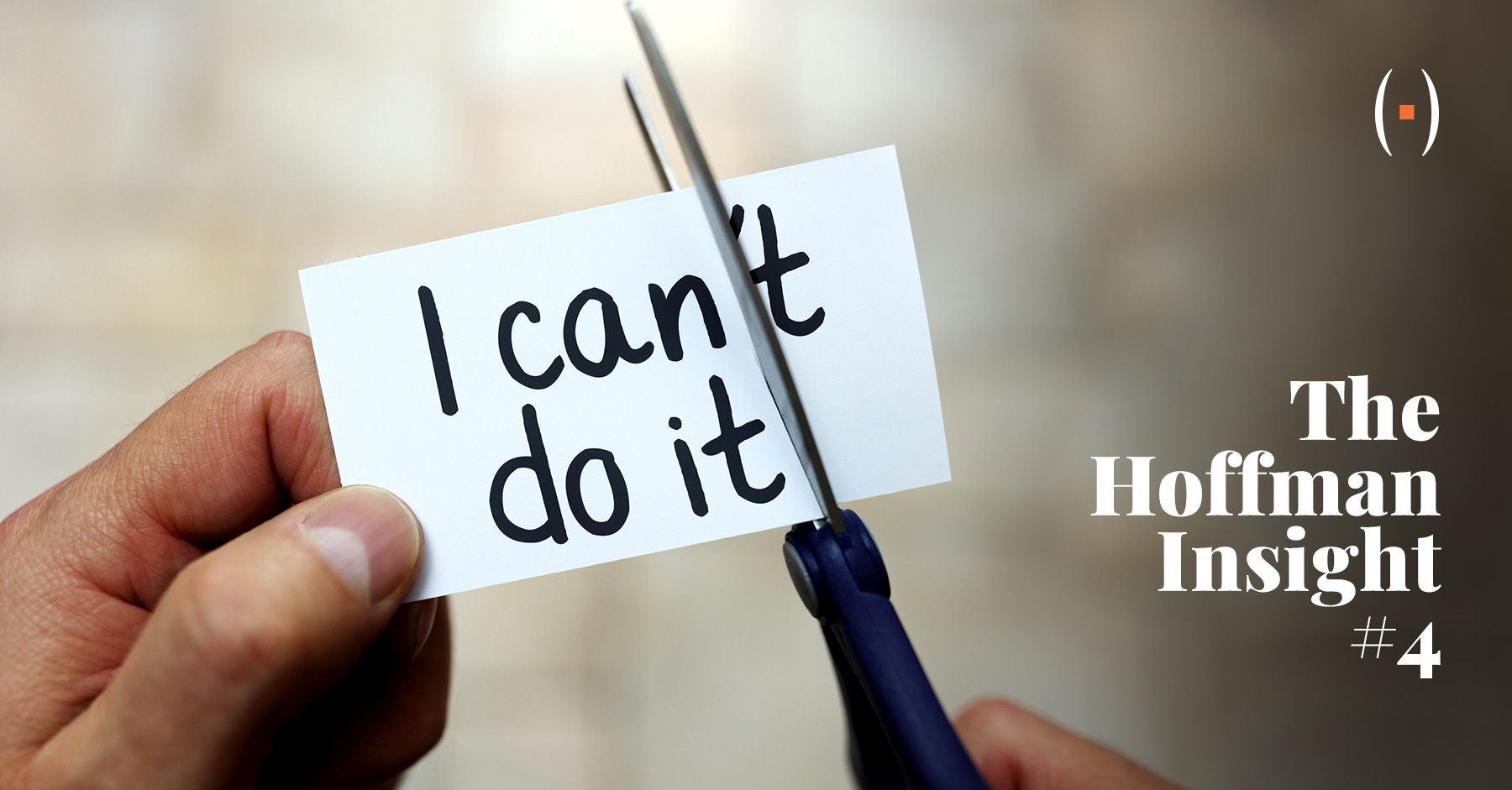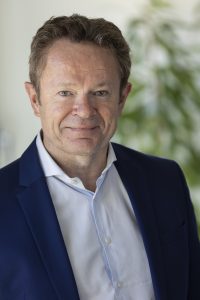The changing face of talent: How you can stay ahead
Organisations looking to fill leadership roles or cultivate a robust talent pool that is resilient and agile will reap benefits from rethinking traditional hiring metrics. Likewise, candidates should consider moving away from the notion of a linear career path, given the importance of adaptability and continuous learning in staying relevant and successful in tomorrow’s job market. And for those considering to change course, we have good news.
Hoffman’s Partners Michel Grisay, Bart Delaleeuw and Mieke Dhoore, have gathered to dive into the why and explore forward-looking talent strategies.

![]()
1. Change is now!
In the whirlwind of the past year, we have witnessed the breakthrough of Generative AI, a development that intersects with the rise of automation and the ongoing digitalisation of society. As some roles fade into obsolescence, a whole spectrum of new jobs and opportunities emerges, many still in the process of being discovered and defined. Yet, this is merely one facet of the broader scenario. Concurrently, other growing sectors are creating an array of novel positions, from sustainability strategists to cyber risk managers. But are we prepared for what’s next?
The “ Global Labour Shortage (1) ” problem is set to become more critical than ever. Aggravated by an ageing workforce, the challenge is now arguably compounded by the difficulties in sourcing candidates with unconventional profiles or hard-to-find skill sets. Ultimately, it is not just about filling positions but about finding leaders who can navigate a rapidly changing business landscape, embrace technological advancements, champion DEI (Diversity, Equity, Inclusion) and drive innovation.
” This signifies a profound shift for both businesses and candidates, signalling a change in the types of «talent» sought after by society. The necessity for reinvention becomes paramount, leading to the somewhat paradoxical task of preparing for jobs that have not yet appeared. Essentially, there is a need to move beyond rigid notions of talent and an excessive focus on past achievements. Organisations must shift the discussion to place more value on different dimensions or previously overlooked attributes. At the same time, it is of prime importance that candidates realise they can and should reinvent themselves. And that they start doing this, now.” Michel Grisay

![]()
2. Talent and the missing link
1. The talent mosaic: piecing together nature and nurture.
A thorough examination of the concept of “talent” in Talent Management (TM) literature reveals a rich array of definitions (2), often at odds with each other and with implications for how talent is identified, nurtured, and retained.
PROVEN TRACK RECORD OR POTENTIAL? THE EXCLUSIVE VS. INCLUSIVE DEBATE.
Clearly, defining talent as a select group of exceptionally high-performing people in critical positions – past or present – differs significantly from adopting a more inclusive view, which sees talent as a larger pool of individuals with great potential for future roles.
NATURE OR NURTURE? THE ACQUIRED VS. INNATE DEBATE.
And the discussion becomes more contentious when attempting to define “talent” as what makes people valuable or outstanding in their role. The view that talent is innate suggests that certain individuals are born with natural abilities or predispositions that set them apart in specific domains. This perspective implies that talent is largely genetic or inherent and may manifest early in life. Conversely, the acquired talent perspective posits that talent can be developed over time through education, training, and practice. This viewpoint emphasises the role of environmental factors, learning experiences, and practice in cultivating talent. It suggests that with the right opportunities and efforts, individuals can develop skills and abilities to a high level of proficiency, even if they do not initially exhibit extraordinary natural aptitude.
THIS PART OF THE DEBATE IS IMPORTANT, AS HOW WE DEFINE TALENT CAN EMPOWER TRANSITIONS OR DISEMPOWER PEOPLE.
If there is no denying that some people have natural inclinations that can speed up or amplify success, empirical research has also shown that “practice makes perfect”. Early studies on expertise have isolated practice as a primary factor in achieving high levels of expertise, popularising the concept of a 10,000-hour threshold for mastery (3). More recent ones have advocated for a balanced approach, examining the interplay between intelligence and practice in skill acquisition and retention. For instance, one notable study focused on chess tournaments as a proxy for practice (4). It showed that both intelligence and practice are crucial in developing expert skills, with practice having a profound impact in the early stages of skill development, where each new experience significantly contributes to knowledge (5).
All in all, we argue that organisations that embrace a more open-ended approach and nuanced view of talent are better equipped to face tomorrow’s challenges. Regarding individuals, their self-perception plays a significant role in their willingness to “shift gears” and adapt. If they believe their skills are transferable and/or can be developed further, they are more likely to positively embrace changes in their job or career (6). This brings us to the next aspect of our discussion.
![]()
PARTNERING UP WITH HOFFMAN
” All our Partners at Hoffman come from the business world; we’ve walked in similar shoes and filled key positions, akin to those our clients seek to fill. This provides us with above-average insights into business processes. At the same time, we strive to help them redefine their approach to talent acquisition so that it aligns with the extremely fast-changing landscape we iscussed. Our deep understanding of both hard and soft skills allows us to uncover extra layers and dimensions in our candidates, going beyond the standard checklist.” Bart Delaleeuw

” We don’t just sift through a candidate’s entire career history, company by company, title by title. Instead, we delve into more meaningful inquiries: In which role did they truly feel impactful? What drives them? What energises them? These are the questions through which we unearth additional facets of a candidate. Often, candidates leave our interviews saying, ‘That was a different experience. That interview really stretched me.’ We challenge them, probing beyond the surface to uncover the human element. We’re not solely focused on past achievements; we’re curious about their potential growth in new environments. What can they bring to the table? What untapped dimensions of their skill set are waiting to be utilised? It’s about understanding not just where they’ve been, but where they’re capable of going.” Mieke Dhoore

2. Identity, what trajectory means to us and how we can change the narrative to shape our future
According to Gérald Bronner (7) , “our biological and social backgrounds, particularly parental influences, shape our self-perception and life trajectory”. And as Michel Grisay points out, “quite often we hear candidates telling how much their family has influenced their life story. But this tells really only part of the story.” Too many of us tend to adopt a deterministic view of what makes us who we are. Are things set in stone, or is it possible to break from these chains, redefining aspects of our identity and building “talent(s)”?
It turns out that people often have more agency than they think. Part of the response lies in their mindset – which also influences the degree of risk-aversion they display, hence their openness to change – and in a simple but overlooked aspect of success, desire. In her seminal work on Mindset, Carol Dweck (8) has shown what difference a fixed and growth mindset can make in terms of being able to pivot and reinvent oneself.
THE FIXED MINDSET
People with a fixed mindset often see their capabilities as static, believing talent and intelligence are innate and inalterable traits. This belief makes them shy away from challenges or any venture beyond familiar boundaries to avoid risking their self-image (“not so smart” or “talented”).
THE GROWTH MINDSET
Conversely, a growth mindset perceives talent not as a predetermined set of abilities but as improvable through effort. For example, with a growth mindset, someone believes he or she can learn finance skills necessary for business, while a fixed mindset leads one to think they are inherently unsuitable for such tasks (“never been good with numbers”, etc…) (9).
The kind of mindset we exhibit is heavily influenced by the role models we had in our childhood … but as Dweck puts it, the transformative message is that “if we want a growth mindset, we can teach ourselves to think that way, one step at a time.” Just as any other skill, or ability, for that matter.
NEUROPLASTICITY: LIFELONG LEARNING MADE POSSIBLE (10)
Neuroplasticity indicates that throughout a person’s life, the brain can continuously create new neural pathways and restructure itself. Ageing is not a one-way street towards cognitive decline. Research (11) reveals a fascinating twist: the brain’s journey through adulthood is unique for each individual and can be positively influenced. Factors like continued education, active social life, sociocultural knowledge, mental stimulation, physical activity, healthy eating, and stress management can help people adapt, learn skills and thrive at any point in their lives.
![]()
3. Future-Proofing executive search and careers
THE TAKEAWAY FOR CANDIDATES
is that deep personal transformation and the acquisition of new skills and competencies can occur at any stage in their careers. This evolution is contingent on their curiosity, openness to change, and willingness to learn. Lifelong learning is not just feasible; it has become essential.
For top-management roles, for instance, a blend of technical expertise and social proficiency is more critical than ever (12). In an environment increasingly mediated by technology, set against the backdrop of modern organisations’ complex structures, the importance of soft skills like emotional intelligence, empathy, and communication is reaching new heights. It is these uniquely human attributes that will be the cornerstone of effective, meaningful interactions and service.
THE TAKEAWAY FOR ORGANISATIONS
is that it is possible for executive search consultants to help them find non-standard, flexible and high-potential profiles, while also factoring in the realities, constraints and immediate needs of the business. However, the key to success lies in clients being receptive to assessing candidates on a wider or more novel set of dimensions, instead of relying solely on demonstrated specific experience or skills.
In an environment where conventional recruitment methods might fall short, Hoffman can help with:
– Navigating the talent frontier: As an executive search firm, Hoffman understands the changing dynamics of the talent market. Our networks and connections are instrumental in navigating a market where multi-faceted individuals – or those with the potential to be – with the right skills and mindset are a rare find. They require proactive discovery, sometimes even long-term scouting, and are known to be more selective in their career decisions.
– Thinking outside the box: Recognising the importance of diverse and unconventional talent pools, Hoffman advocates prioritising meta-cognition skills and self-management while also creating solid structures for nurturing talents (i.e., cross-departmental opportunities and targeted training). Research has shown that predictors of potential include learning agility, a flexible mindset and high motivation or drive (13). In addition, extensive surveys conducted among business leaders have revealed that dimensions such as active learning and adaptability are seen as more important than ever before (14). The latest World Economic Forum Report on the Future of Jobs reaffirms but also expands upon these findings. Topping the list of most critical skills in the future job market is “Analytical Thinking” followed by “Creativity” and “AI & Big Data”. Emphasising the importance of soft skills, “Leadership and Social Influence” rank fourth while “Resilience, Flexibility and Agility” round out the top five (15).
– In short, connecting organisations with the transformative talent they need to thrive: Hoffman’s Partners are committed to redefining the boundaries of executive search, ensuring our clients are not just equipped for the present but are pioneering the future of leadership to drive sustainable growth, fuel innovation and establish a competitive edge. By leveraging fresh insights and forward-thinking strategies, we transform the narrative of talent acquisition to build a workforce resilient enough to navigate the uncertainties of the future and capable of turning changes into opportunities.
![]()
Are you ready to open the box, talk to creative, curious consultants and make a difference for your company or yourself?
Get in touch with us:
Ineke ARTS | ia@hoffman.be |
Jean-Michel LUCAS | jml@hoffman.be |
Michel GRISAY | mg@hoffman.be |
Mieke DHOORE | md@hoffman.be |
Stefaan VERDUYN | sv@hoffman.be |
Denis GALLANT | dg@hoffman.be |
Bart DELALEEUW | bd@hoffman.be |
Boulevard de la Woluwe 62, 1200 Brussels – Kouter 7, B101, 9000 Ghent
www.hoffman.be | + 32 2 779 52 52
(1) AESC (Insights) Implications of the Global Executive Talent Shortage. [online] https://1www.aesc.org/insights/blog/implications-global-executive-talent-shortage
(2) Vardi, S., & Collings, D. G. (2023). What’s in a name? talent: A review and research agenda. Human Resource Management Journal, 33(3), 660–682. https://doi.org/10.1111/1748-8583.12500
(3) One of the most cited studies in this field is by Ericsson, Krampe, and Tesch-Römer (1993), who examined the practice habits of student violinists at a West Berlin music academy. The study found that top-rated violinists, identified as ‘best’ by faculty, had clocked in over 10,000 hours of focused practice – outperforming ‘good’ violinists by 2,500 hours and ‘teacher’ level players by a whopping 5,000 hours. See Ericsson, K. A., Krampe, R. T., & Tesch-Römer, C. (1993). The role of deliberate practice in the
acquisition of expert performance. Psychological Review, 100(3), 363–406. https://doi.org/10.1037/0033-295X.100.3.363
(4) Vaci, N., Edelsbrunner, P., Stern, E., Neubauer, A., Bilalić, M., & Grabner, R. H. (2019). The joint influence of intelligence and practice on skill development throughout the life span. Proceedings of the National Academy of Sciences of the United States of America, 116(37), 18363–18369. https://doi.org/10.1073/pnas.1819086116
(5) Unsurprisingly though rarely demonstrated empirically, as argued by the authors, “more able people benefit more from the same amount of learning activity”. In other words, “they acquired chess skills more quickly than less intelligent players, reached a higher peak performance, and arrested decline in older age.”
(6) Jiang, W. (2023, November 29). The Secret Ingredient for a Career Change, INSEAD. [online] https://knowledge.insead.edu/career/secret-ingredient-successful-career-change
(7) Bronner, G. (2023). Les origines: Pourquoi devient-on qui l’on est ?. Paris: Autrement.
(8) Dweck, C. (2006). Mindset: The new Psychology of Success. New York: Random House. Also see: https://www.matthewsyed.co.uk/growth-mindset/
(9) Cote, C. (2023, March 10). Growth Mindset vs. Fixed Mindset. What’s the difference? Harvard Business School Online, Business Insights.
[online] https://online.hbs.edu/blog/post/growth-mindset-vs-fixed-mindset
(10) Chen, SH. & Goodwill, A. (2022). Neuroplasticity and Adult Learning. [online] https://www.researchgate.net/publication/365349693_Neuroplasticity_and_Adult_Learning
(11) Phillips, C. (2017). Lifestyle modulators of neuroplasticity: How physical activity, mental engagement, and diet promote cognitive health during aging. Neural Plasticity, Vol. 2017, Article ID 3589271, 22 pp. https://doi.org/10.1155/2017/3589271
(12) Ignatius, A. and Sadun R. (2023, August 29). How to reskill your workforce in the age of AI, Harvard Business Review. [online] https://hbr.org/2023/08/how-to-reskill-your-workforce-in-the-age-of-ai
(13) Vardi, S., & Collings, D. G. (2023). What’s in a name? talent: A review and research agenda. Human Resource Management Journal, 33(3), 660–682. [online] https://doi.org/10.1111/1748-8583.12500
(14) Ling, L. (2022) Reskilling and Upskilling the Future‑ready Workforce for Industry 4.0 and Beyond. Inf Syst Front (2022). [online] https://doi.org/10.1007/s10796-022-10308-y
(15) World Economic Forum (2023), The future of Jobs Report 2023. [online] WEF_Future_of_Jobs_2023.pdf (weforum.org) See full list: 1. Analytical Thinking, 2. Creativity, 3. AI and Big Data, 4. Leadership and Social Influence, 5. Resilience, Flexibility and Agility, 6. Curiosity and Lifelong Learning, 7. Technological Literacy, 8. Design and User Experience, 9. Motivation and Self-Awareness, 10. Empathy and Active Listening